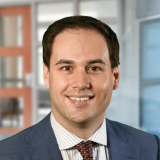As a pulmonary and critical care physician, I see patients every day struggling to breathe. Chronic lung diseases like COPD are relentless, robbing people of their independence, mobility, and, in many cases, their will to keep fighting. Many of these diseases are incurable, progressing over time and leaving patients with debilitating symptoms and a reduced quality of life.
Yet, despite how common and devastating these conditions are, one of the most effective treatments — pulmonary rehabilitation (PR) — remains woefully underutilized. Less than 5% of eligible patients enroll in PR, despite strong evidence that it improves exercise capacity, quality of life, and may even impact survival.
Why? Barriers like low referral rates, lack of available programs, transportation challenges, and financial limitations make PR inaccessible to the vast majority of those who need it. As a physician, it is frustrating to know that a proven intervention exists but remains out of reach for so many.
But something unexpected happened during the COVID-19 pandemic. In the chaos of overwhelmed hospitals and postponed in-person care, virtual medicine emerged as a lifeline. Legislation allowed for virtual PR to be reimbursed under Medicare, creating a new opportunity to bring life-changing therapy directly into patients’ homes.
Pulmonary rehab is more than just exercise. It is a structured program combining aerobic and strength training with breathing techniques, education, and psychological support. It gives patients the tools to take control of their disease.
And now, thanks to virtual options, we can remove some of the biggest barriers that have historically kept patients from participating. No longer does a lack of reliable transportation, extreme weather, or living too far away from a rehab center need to stand in the way. For patients at high risk of complications from respiratory viruses, virtual PR also reduces exposure to potentially life-threatening infections, particularly during peak flu and COVID seasons.
Most importantly, virtual PR is not a compromise — it is an equivalent, evidence-based alternative. Studies show that virtual PR is non-inferior to in-person programs and, in many cases, has higher completion rates. When care is easier to access, more patients stick with it, leading to better outcomes.
As physicians, we need to do more than just hope for the best. We need to actively refer patients to PR, champion policies that expand access, and embrace virtual options that break down traditional barriers.
I have seen firsthand what happens when patients cannot access pulmonary rehab. One patient in particular is often on my mind — a 56-year-old woman with a rare lung disease who lived two hours from the nearest rehab center. She needed PR to qualify for a lung transplant, but the distance made it impossible. Without that therapy, she never became eligible for a lung transplant and, tragically, lost her life.
Her story is not unique. Too many patients fall through the cracks simply because they cannot get to an in-person program. Virtual PR is not just about convenience — it is about saving lives. That is why expanding access through virtual PR is so vital to help more patients breathe easier, live longer, and reduce the overall burden on our health care system. By breaking down barriers to care, we can reach those often left behind — the elderly, those with financial constraints, and individuals in rural communities — bringing needed resources, support, and a sense of community directly to their homes.
I encourage you to refer eligible patients to virtual pulmonary rehab — helping them breathe easier and improve their overall quality of life. For many, it’s not just an option — it’s a lifeline. Eligible patients include those with COPD, emphysema, interstitial lung disease, pulmonary hypertension and bronchiectasis. Think of those patients with frequent hospitalizations or exacerbations. They need all the help they can get, and pulmonary rehab should be a part of this care.
As clinicians, policymakers, and patient advocates, we must utilize health care technology to meet patients where they are and expand access to those who need it most. It is time to make pulmonary rehab as accessible as the click of a button — because for our patients, every breath counts.
Have any of your patients utilized virtual PR? Share how they’ve responded in the comments.
Dr. Levine is a pulmonologist in Kansas City. He is a co-founder and CMO of PulmaCare, a virtual pulmonary rehab platform that leverages the power of technology to break down barriers to patient care.
Patient identifying details have been changed.
Image by Alphavector / Shutterstock







